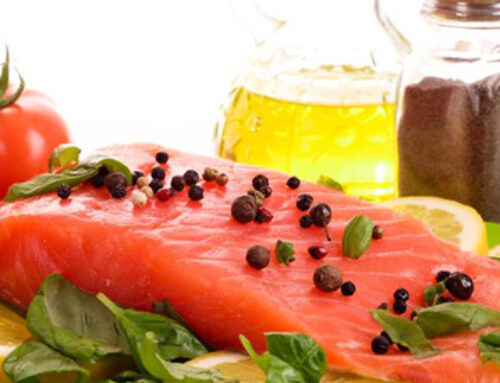Many of my clients ask me whom they should rely on for accurate nutrition advice. Navigating the sea of information coming from the media, nutrition professionals, and alternative healthcare providers can be completely overwhelming. Our government publishes its own nutrition advice through the USDA—advice that is often contradicted by dietitians and nutritionists. An excellent example is margarine: initially touted as a healthy alternative to “artery-clogging butter”, is now known to contain dangerous trans fats that are far worse than the naturally occurring saturated fats found in butter. Many people still use margarine because they prefer its taste or, worse, because they are still under the impression that it is healthier. (See my article The Bad Fat)
Nutritionists aren’t always on the same page regarding health information either. For example, some promote the heart-healthy, low-fat diets that the USDA recommends, while others insist animal fats have many beneficial and protective qualities. Some swear raw milk prevents a host of ailments while others avoid it like the plague, insisting it is unsafe. The media is a whole different animal. Books written by authors with dubious credentials gain a following and create a media fire that dies out as soon as the next one comes along.
It is a struggle trying to sift through all this information and come to a place where you can feel confident about your food choices. America is the most obese nation in the world, a world where the processed-food industry is a 2.8-trillion-dollar behemoth; this is no coincidence. It shows us exactly what we have been putting in our mouths: lots of junk.
It is clear that we have lost our frame of reference. Either the wisdom that was handed down from generation to generation is not here anymore, or it has been replaced with pop-culture wisdom. Corporate food is winning and laughing all the way to the bank. Their advertising campaigns have managed to convince most people that food companies know which foods are best, and they just happen to be exactly what they are selling.
This new industry that creates faux foods has only been around for the last 80 years or so. The genes we carry today came from our ancestors and are almost 2.9 million years old. Humans began consuming grains in significant amounts at the beginning of the agricultural era about 10,000 years ago. Those grains were quite a bit healthier than the grains we consume today. The sugary, nutrient-lacking refined carbohydrates that are such a big part of our modern diet are causing us sickness and disease. Our ancestors ate exclusively whole foods that were not tampered with in labs or ruined with chemicals and preservatives. The diseases that cause the most deaths in our modern world (diabetes, heart disease, and cancer) were unheard of in our ancestors’ time. (See my article Sugar is Not Your Friend)
All is not lost, though; there are many things we can do to return to good health or improve our current health status. First, we can make sure the fruits and vegetables we eat are free of chemical residues and are grown in soils that are high in minerals and good microbes. Purchasing organic produce improves your chances of buying foods that are higher in nutrients because foods grown in chemical-laden soil may have lower nutrient values. When Dr. Donald Davis at the University of Texas did a study on the decline in the nutrient levels of produce, he found calcium levels in broccoli averaged 12.9 milligrams per gram of dry weight in 1950, but only 4.4 mg per gram of dry weight by 2003 (ref. Davis). That is, calcium levels in broccoli have decreased by two thirds in a little over 50 years.
There is plenty of data that show there are many more nutrients in foods that are raised with sustainable, organic methods. The British Journal of Nutrition published an analysis of 343 peer-reviewed articles that concluded organic fruits and vegetables had between 18 and 69 percent more antioxidants, far lower levels of pesticides, and lower levels of toxic heavy metals than conventionally-grown produce (ref. Soil Assoc.). Studies show we can get more nutrients from our foods if we invest the time and money into produce that is grown with care.
Another thing we can do to improve our health and take us back to the wisdom of our ancestors’ diets is to ensure the animals we eat are raised in a respectful and considerate way. Factory farming is not how animals should be raised. This torturous method of raising our animals for food is a perfect example of how money and greed can cause us to lose our humanity and our health. Our food animals should be treated with utmost care because their health directly affects our health. Humanely raised, grass-fed animals provide us with food that is wholesome and rich in nutrients. This food may be more expensive, but the trade-off is worth it because it can keep us healthy and prevent expensive medical bills in the future. Wisdom is spending a little extra on the foods that promote our health.
I think the wisdom of our ancestors is still with us; we just need to think more deeply and carefully consider the impact of the foods we eat. Do we really want the corporations responsible for the manufacture of billions of tons of toxic chemical sprays and genetically modified ingredients telling us what we should eat? We have an obligation to our children to teach them about the wisdom of our past so they can take their generation and future generations past this time of chronic sickness and poor health. Making wise and informed decisions about what we put into our bodies can help us return to the legacy of our ancestors—a time when people were strong and healthy, illness was infrequent, and good food was recognized as the path to excellent health.
Cited references:
1. Davis, Donald R. Dr., 2008, Declining Fruit and Vegetable Nutrient Composition: What is the Evidence?, Biochemical Institute, The University of Texas, Austin. Read Dr. Davies’ entire study in HortScience, Feb. 2009; vol. 44 no. 1. Click here. Accessed December 2014.
2. The Soil Association and Sustain, 2001, Organic Food and Farming – myth and reality, Organic vs. non-organic: the facts. ISBN: 0-905200-79-9. Read the entire document. Click here. Accessed December 2014.










